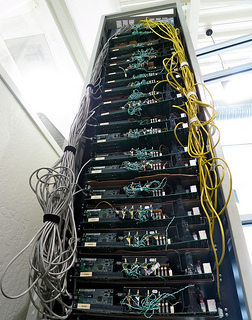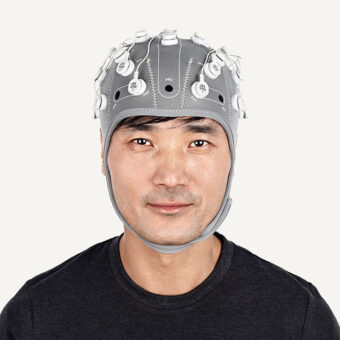In case you missed it, which I doubt if you are reading this blog, there have been 2 recent announcements that will have a profound affect on our understanding of the brain and the future of neuroscience over the next 10 years.
The first, the Human Brain Project, came from the European Commission’s FET Flagship program. Just over 1 Billion € will be made available over 10 years to help understand the brain. The general idea is an attempt to build a multi-scale software simulation of a human brain, multi-scale meaning that it will include processes at all scales from genes to molecular interactions to synapses to neurons to neuronal populations to global dynamics. Many have criticised this approach on the grounds that if we model what we know, which is not a lot, we will build a simulation with enormous gaps that won’t really teach us anything new.
There is some sense to this but I think it ignores some important aspects (in my first full disclosure ever I should say the we – Starlab – officially supported the proposal and appear in the final report). We should keep in mind that the FET Flagship program is funded by the EU’s Information and Communications Technologies (ICT) program. They have no particular interest in neuroscience beyond it’s application in addressing some of the EU’s grand challenges in, for example, health and inclusion. They are however very interested in the likely benefits of building a European interactive supercomputing platform that takes advantage of neuromorphic or bioinspired computing techniques, cloud computing, massive data, bioinformatics, neuroinformatics and so on. If you look closely at the project they really focus on the idea of ICT-accelerated neuroscience and I think there will be breakthroughs in many of these areas. The more important point though is that accelerating changes in these technologies will form a positive feedback loop with the neuroscience as more complex models can be tested and discarded or improved more quickly. The impact of this process is hard to predict but I’m guessing that neuroscience will benefit greatly. I am a skeptical of such large projects in general but now that it is up and running it will be very interesting to follow.
The second project, BRAIN, was announced shortly after. In what felt like one-upmanship this US project is an even more ambitious project in terms of $ although in their defence the timing was apparently coincidental as it has been in the works for a while. The goal here is to build a brain activity map (BAM) for an entire brain, essentially at once, at high temporal resolution. Right now we can look at activity in very small areas with good spatial resolution using implanted probes or electrodes or over large areas using imaging techniques that have very poor spatial resolution. We cannot do both. This project also has it’s critics as it’s not clear what activity will be monitored, electrical or chemical, action potentials or ion channels? A paper from the group lays out the idea here but it does seem to be focussed on action potentials or spikes. The critics would argue that this ignores a lot of important information. Again though it seems to me that this is really a technology project and not just a neuroscience project. The goal is first to build the sensors that will allow this to happen using new or as yet unknown techniques. In a very recent paper there is a beautiful example of whole brain mapping from Ahrens and Keller where light sheet microscopy is used to map nearly all of the neurons in a zebrafish (video).
The term Big Neuroscience was coined to describe these 2 projects but in both cases they are banking on exponential advances in technology similar to those seen in the Human Genome Project where advances in technology allowed them to complete 90% of the task in something like the final 10% of the project. To me these are both Big Technology projects and I think this is almost as interesting as the neuroscience itself and I would not bet against this effect playing a key role again.


